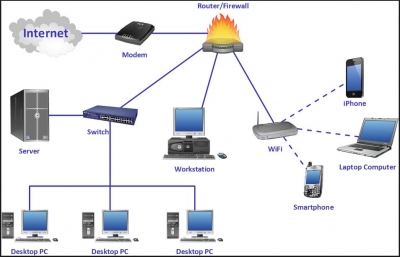
The Internet is a network of computers and certain other devices. In a network, all of the devices are connected. The Internet links tens of thousands of smaller networks. The Internet connects millions of computers in homes, businesses, and schools. People can bank, shop, watch TV, and do many other things on the Internet.
People can also send personal messages through the Internet. Such messages include e-mail (electronic mail), which is sent to and from an electronic “address.” Instant messages, or IM’s, work like back-and-forth conversations.
Many devices can access, or get into, the Internet. They include computers, mobile phones, and electronic game machines. A piece of equipment called a modem connects some devices to the Internet. Other devices can connect by using wireless technology, such as Wi-Fi or Bluetooth. Wireless technology allows communication between devices by means of radio waves sent through the air.
Information on the Internet exists as digital codes. Computers and other devices translate these codes into text, pictures, sounds, and videos. Digital codes are split up into smaller pieces called packets. The packets travel separately through the Internet. When the packets reach a computer or other device they are put back together into a single code. All these bits of information make up pages on the World Wide Web, the system of computer files on the Internet where much information is stored.
Picture Credit : Google

